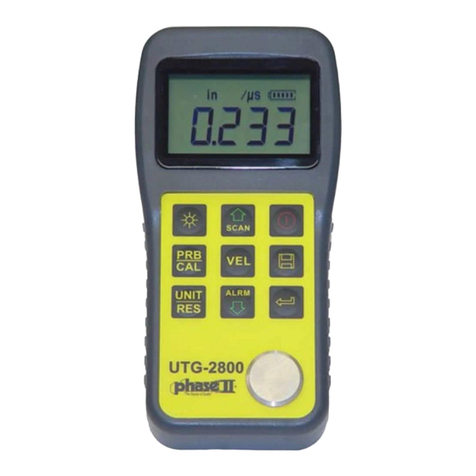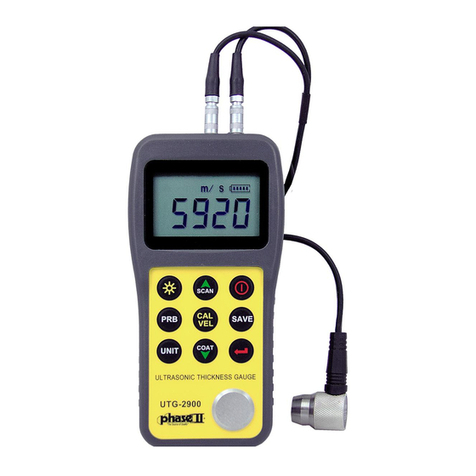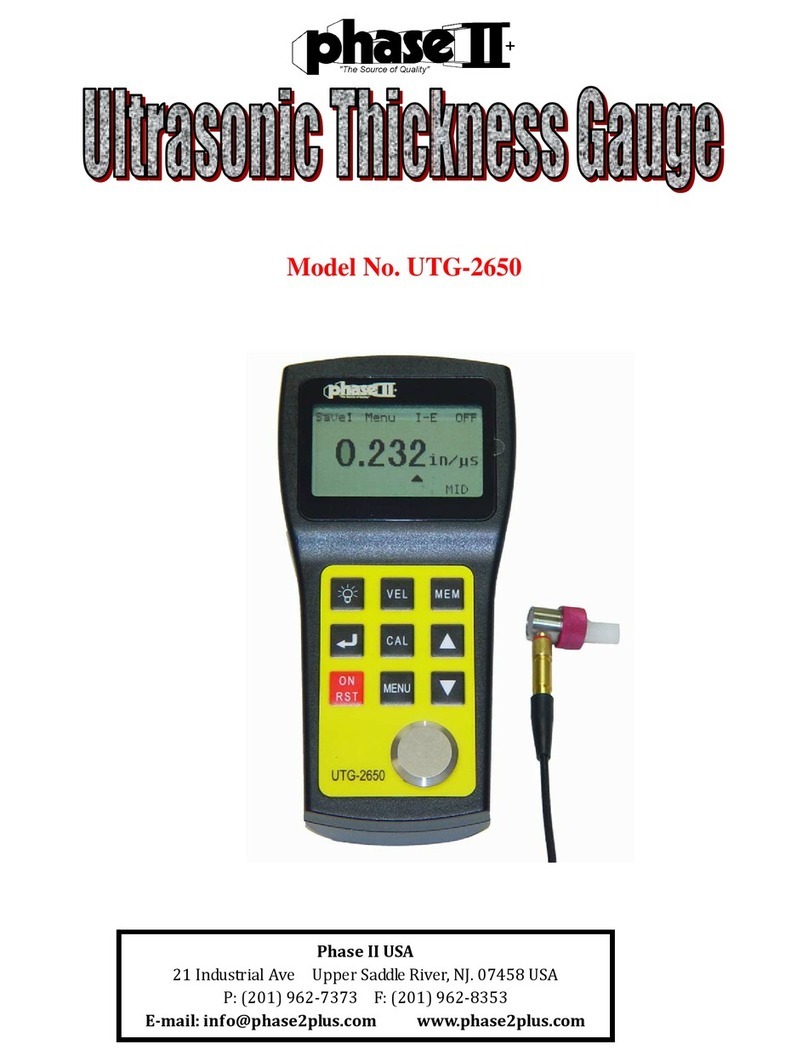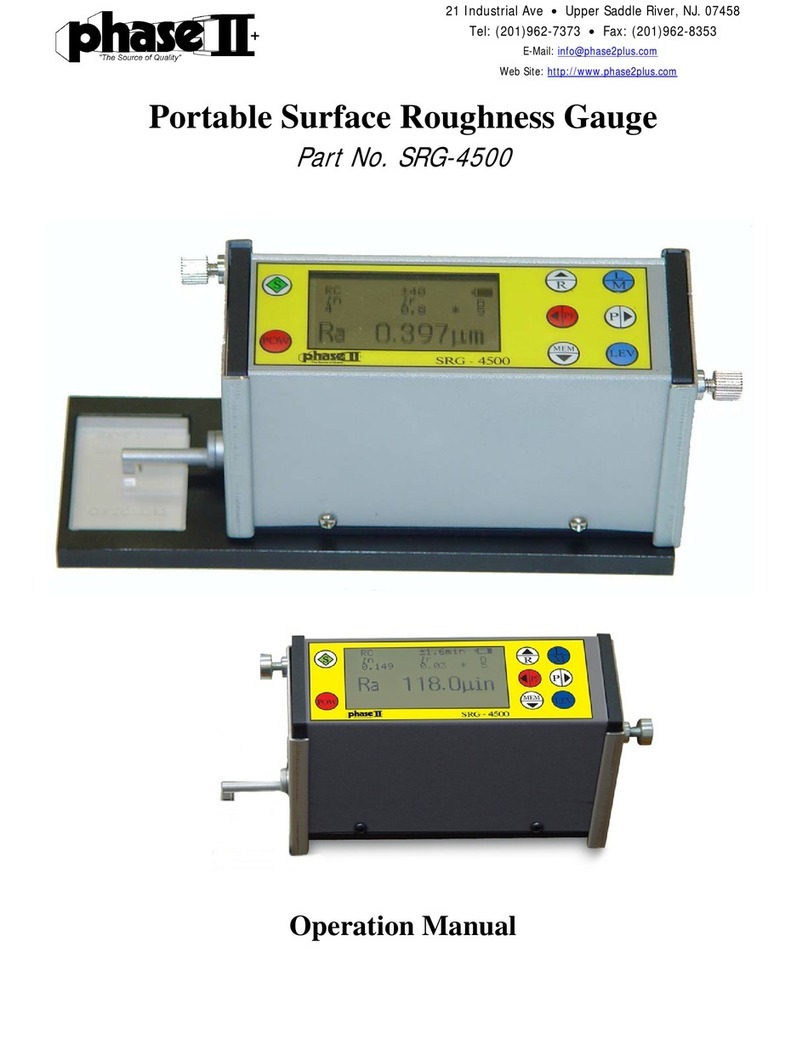
3.2PRESETOTHERSPECIFICATIONS
Press “M”toentertheuserinterface,whichallowsyoutoselectandadjust options like VIEW
MODE, PROBE SETUP, MINIMUM ALARM, MAXIMUM ALARM, NORMAL THICKNESS, MINIMUM of
B‐SCAN, MAXIMUM of B‐SCAN, RECTIFICATION, RECTIFICATION WAVEFORM, RESOLUTION,
LANGUAGE,UPDATERATES,UNITS,ANDDEFAULTSETUP.Seethefollowingfigure:
3.2MenuSelections
VIEWMODE:normalmode,differencemodeandlimitscanningmode.
PROBESETUP:PT‐10/PT‐08(normalprobe),PT‐06(smallprobe),PT‐04(miniprobe),GT‐12(high‐temperature
probe),andZT‐12(castironprobe).
MINIMUMALARM: set the minimum thickness alarm value. The result will be displayedinrediftheactual
thicknessislessthantheminimumvaluepreset.
MAXIMUMALARM: set the maximum thickness alarm value. The result will be displayedinrediftheactual
thicknessismorethanthemaximumvaluepreset.
NORMALTHICKNESS:setthenormalthickness.Therealconcreteapplicationwillbe introduced in the
DIFFERENCEMODE.
MINIMUMofB‐SCAN:setminimumthicknessforB‐scan
MAXIMUMofB‐SCAN:setmaximumthicknessforB‐scan
RECTIFICATIONMODE: RF, full wave, half ‐, half +. RF describes the complete echo waveform; full wave
indicatesthehalf+echoandtheoverturnedhalf‐echo;half–meansputtingoffthehalf+echoandturnthehalf
–overto+;half+meansputtingoffthehalf–echoandonlyleftthehalf+echo.
RECTIFICATIONWAVEFORM:outlinemodeandfillmode.
RESOLUTION:SelectableResolution:0.001”,0.01”or.01mm
LANGUAGE:theinterfacelanguage:ChineseorEnglish.


































